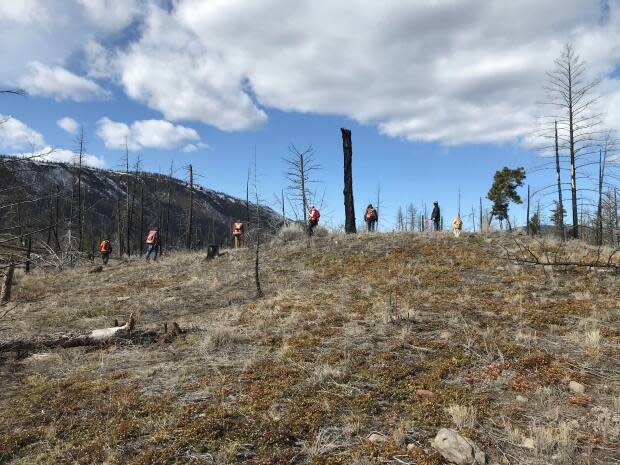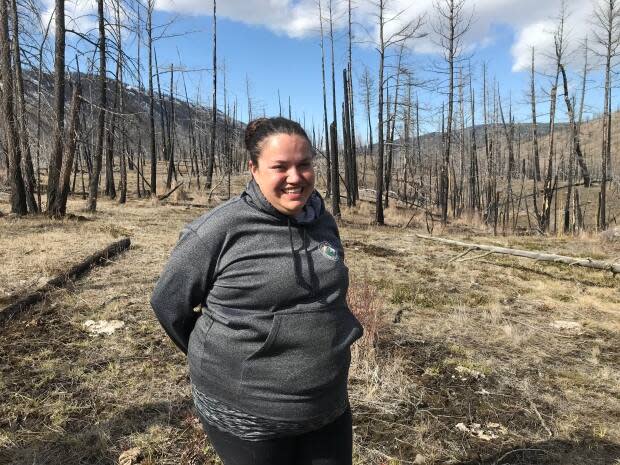Disastrous 2017 fire makes it easier for First Nation's archeologists to uncover the past

Widespead destruction of forests by a 2017 wildfire in B.C.'s southern Interior has made it easier for a First Nation in the Kamloops area to unearth traces of its past.
Skeetchestn Natural Resources — the economic development division of the Skeetchestn Indian Band — has been conducting archeological surveys in the Back Valley area about 77 kilometres west of Kamloops, an area ravaged by the Elephant Hill wildfire.
Joanne Hammond — the director of archeology and heritage with Skeetchestn Natural Resources — says by clearing tree cover, the fire has helped the company to confirm Back Valley has been inhabited by Indigenous people for thousands of years.
"The ground is bare … we get these exposures that we wouldn't ordinarily get in a healthy living forest," Hammond told CBC reporter Doug Herbert. "It's an excellent opportunity to do archeology. We get a lot of information for not a lot of effort."
The 2017 wildfire was one of the biggest natural disasters in B.C.'s history, burning nearly 1,920 square kilometres of land and homes in Ashcroft, Boston Flats, Cache Creek, Loon Lake and the Pressy Lake areas over 76 days.
Hammond, accompanied by her Grade 5 son Jack Kaltenrieder, showed Herbert some of the artifacts they had unearthed.

"We found some scrapers or tools that are designed for scraping animal hides to prepare them as textiles," Hammond said. "We found a whole pile of knives or sharpened stone blades."
Hammond says archeological evidence suggests Back Valley has been inhabited for 7,000 years. She says depressions from pit house in the area prove Skeetchestn First Nation members have lived there.
"There are stories in living memory of [Skeetchestn] people's relatives living here … around the time of the smallpox epidemic," she said. "In the 1860s … people came here to get away from it [the pandemic]."

Terry Soltys, a Skeetchestn member and an apprentice archeologist, says she's excited to find more artifacts.
"The site just keeps getting more exciting each time we come back," Soltys said.
The archeological projects have also allowed Soltys's an opportunity to socialize, two metres apart, with fellow band members and coworkers during the COVID-19 pandemic.

"The socialization — even if it's distancing — is better than nothing," she said. "We can't go out and visit our elders like we used to [before the pandemic] … that's a big part of how we mingle and group together."
Tap the link below to hear Doug Herbert's conversation with Terry Soltys and Joanne Hammond on Daybreak Kamloops:
